Have you ever wondered how stores know what products to recommend, how banks detect fraud, or how weather forecasts predict storms? The answer lies in data mining. It is a powerful way to uncover patterns and useful information from unstructured data. The good news? You don’t need to be a data expert or a math genius to use these data mining techniques.
In this guide, you’ll walk through simple, practical data mining techniques that anyone can use. No fancy math degree is required! You’ll also learn about data mining tools that turn confusing numbers into useful insights. The post also delves into the benefits and best practices for data mining.
What is Data Mining, and How Does It Work?
Data mining is the process of finding useful patterns in large datasets. Businesses use it to understand their customers and make better decisions. It works by sorting through digital information to find hidden connections that aren’t obvious at first glance. The best part? You don’t need to look at every single piece of data manually. Special data mining techniques and tools can analyze it all quickly to find what matters most. It’s about turning raw numbers into practical knowledge that helps businesses grow and serve customers better.

Table of Contents
What is Data Mining, and How Does It Work?
Popular Data Mining Techniques for Big Data Analysis
Data Mining Made Easy with These Popular Tools
Harnessing the Key Benefits of Data Mining
Best Practices for Efficient Data Mining
Popular Data Mining Techniques for Big Data Analysis
These popular data mining techniques help find useful information in data. Each method works differently for various needs. Some group things together, others predict what might happen. They all help make sense of data. You can choose the right data mining techniques for your project.
I. Classification
Classification is like sorting things into different boxes based on their features. It uses historical data to decide where new items belong. For example, doctors use it to identify whether a tumor is cancerous (yes/no) based on test results. Banks classify loan applications as “approve” or “reject” by checking income and credit history.
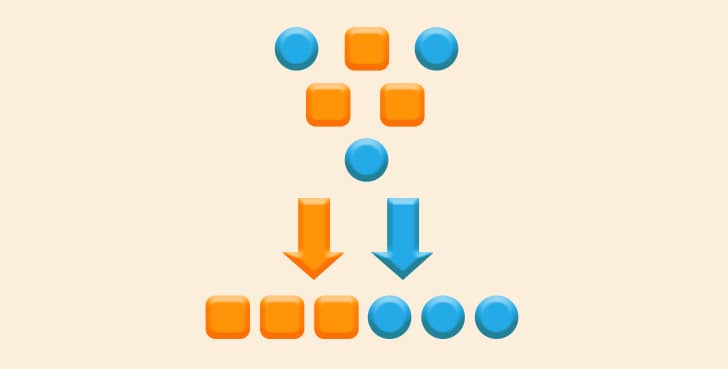
II. Clustering
Clustering groups similar things together without any pre-set labels. Stores use it to find customers with similar shopping habits. For example, they might notice people who buy baby food often also buy diapers. This method is useful for finding hidden patterns when you don’t already know what groups exist.
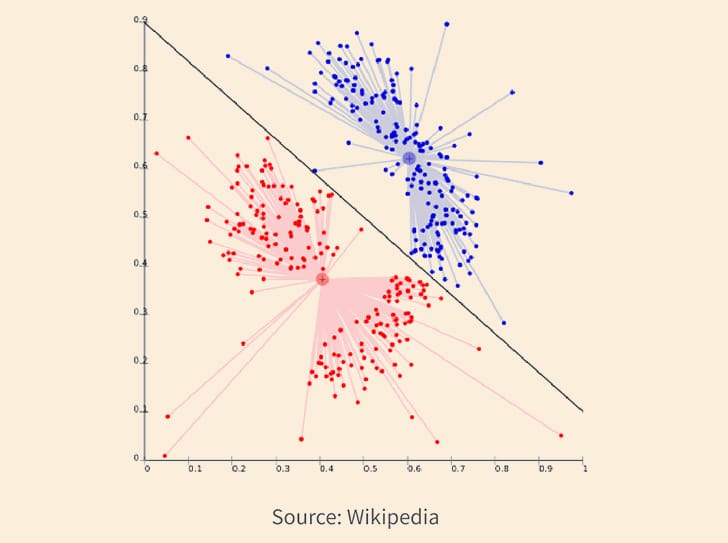
III. Decision Trees
Decision Trees work like a flowchart, asking multiple yes/no questions before reaching a decision. Each question splits the data into multiple branches until a final answer is reached. For example, a bank might use it to approve loans by asking: “Is income above $50,000?” If yes, “Has credit score > 700?” This helps make clear, step-by-step decisions. Doctors also use it to diagnose illnesses by checking symptoms one by one.

IV. Deep Learning
Neural Networks mimic how the human brain learns, using layers of “neurons” to find patterns. They improve with more data. For example, they power facial recognition (like unlocking phones with your face) or voice assistants (Siri understanding speech). They can also predict house prices by learning from past sales data.
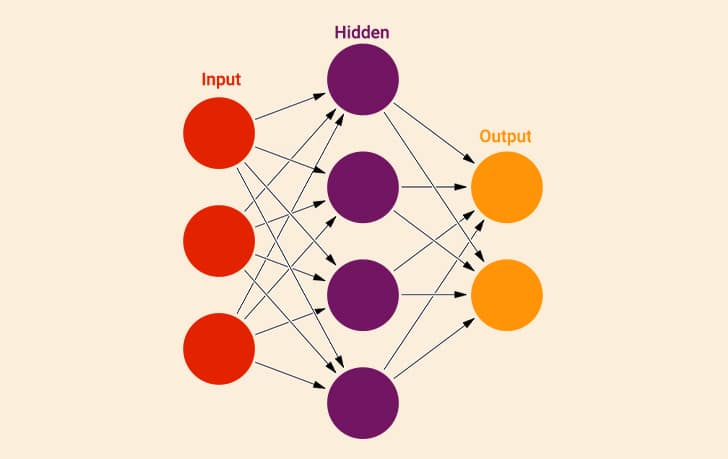
V. Anomaly Detection
This spots unusual data, like a sudden spike in credit card spending, which might mean fraud. Banks use it to block suspicious transactions. Hospitals use it to monitor patient health for emergencies. Another example could be a factory machine overheating compared to normal temperatures.
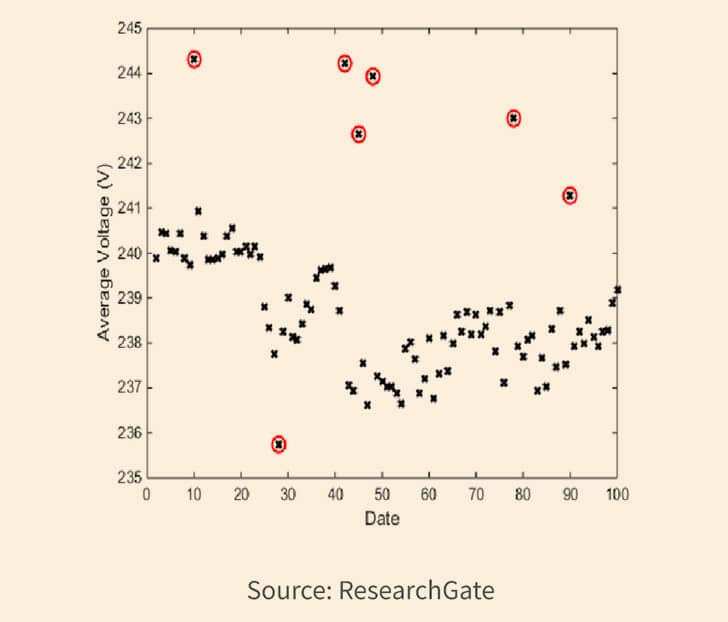
VI. Association Rule Learning
This finds connections between items, like “people who buy chips often buy soda too.” Stores use it for product placements (keeping chips near soda) or discounts (offering soda with chips). Amazon’s “Customers also bought” suggestions work this way.
VII. Regression
Regression predicts numbers based on past data. Like guessing tomorrow’s temperature using today’s weather. Businesses use it to forecast sales – if ads increase, how much will sales grow?
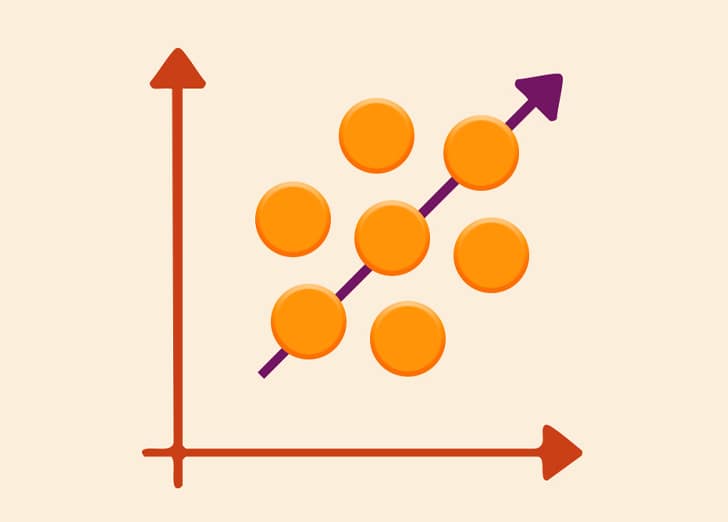
VIII. Ensemble Methods
Ensemble Methods combine multiple models to improve accuracy, like asking 10 doctors for a diagnosis instead of one. For example, Techniques like Random Forest (many Decision Trees) predict loan defaults better than a single tree.
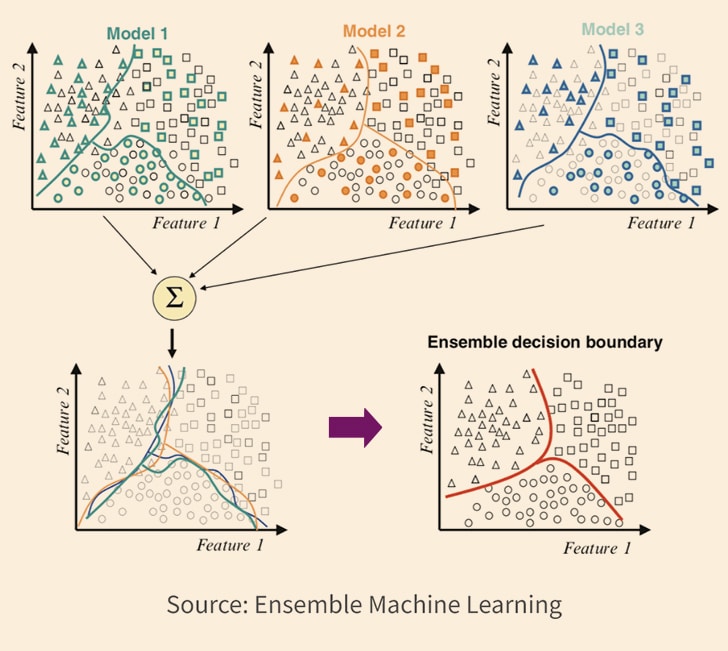
IX. Text Mining
Text Mining extracts valuable information from unstructured data. This may include sorting reviews as positive/negative or finding trending topics on Twitter. For instance, Gmail uses text mining to suggest quick responses. Companies use text mining to see what customers say about their brand online.
X. Time Series Analysis
This studies data over time, like tracking daily temperatures to predict weather or stock prices to forecast trends. For example, stores predict holiday sales by looking at past years’ data.

How Data Mining Helping Businesses Get Closer to Their Target Customers
Data Mining Made Easy with These Popular Tools
Here are commonly used tools for data mining. They range from free options to paid professional ones. Some need coding, others work with just clicks. These tools help discover insights and patterns in data. Choose what fits your project best.
1. RapidMiner
RapidMiner is a popular tool that makes the mining of raw data simpler. It cleans data, finds patterns, and predicts future trends. Many businesses and schools use it because it’s powerful yet simple. The free version has limits, but the paid one is great for big projects. It needs a strong computer to run smoothly.
| Pros of Using RapidMiner | Cons of Using RapidMiner |
|---|---|
| Works on all operating systems | Some features cost money |
| Supports many file types | Not ideal for coding enthusiasts |
| Good for big data | Takes time to learn fully |
| Easy drag-and-drop system | Can be slow sometimes |
| Many tutorials are available | Limited free version |
| Used by real companies | Needs a fast computer |
2. Weka
Weka is an open-source and freely available data mining tool for newbies. It helps uncover hidden patterns, forecast trends, and classify data. Students and researchers prefer it because it’s free and comes with many built-in tools. However, it struggles with heavy datasets and lacks some modern features.
| Pros of Using Weka | Cons of Using Weka |
|---|---|
| No coding needed | Limited advanced options |
| Simple for beginners | Not good for real-time analysis |
| Works on Windows, Mac, and Linux | Fewer updates |
| Easy drag-and-drop system | Can be slow sometimes |
| Many built-in tools | Small user community |
| Free to download | Graphics look outdated |
| Good for learning basics | Slow with big data |
3. KNIME
KNIME is a free tool that connects data steps like building blocks. It’s great for visualizing workflows without coding. Businesses use it for analyzing sales, while students use it for projects. It can handle large amounts of data but gets messy with very complex tasks.
| Pros of Using KNIME | Cons of Using KNIME |
|---|---|
| Free and open-source | Needs practice to master |
| No coding is required | Some plugins are paid |
| Works on all devices | Graphics could be better |
| Good for teamwork | Slower with huge files |
| Handles big data well | Fewer updates than others |
| Many add-ons available | Complex workflows get confusing |
4. Apache Mahout
Apache Mahout is a free tool that helps computers learn from data without needing to code everything from scratch. It’s designed to work with big datasets and is often used with Hadoop (a system for handling large data). Mahout is great for tasks like recommendations (like Netflix suggesting movies) and grouping similar items together. However, it needs some programming knowledge and works best with other big data tools.
| Pros of Using Apache Mahout | Cons of Using Apache Mahout |
|---|---|
| Free to use | Needs coding skills |
| Good for big data | Hard for beginners |
| Strong for machine learning | Not many pre-built models |
| Used by big companies | Setup is complicated |
| Works well with Hadoop | Not good for simple tasks |
| Ideal for recommendations | Slow with small data |
5. Teradata
Teradata is a paid tool used to study massive datasets. It helps businesses make decisions by finding patterns in sales, customer behavior, and more. The tool is fast but needs experts to set it up properly. It’s not for newbies or small-scale enterprises.
| Pros of Using Teradata | Cons of Using Teradata |
|---|---|
| Good for business reports | Hard to learn |
| Handles large datasets | Needs experts to manage |
| Trusted by big companies | Not for small projects |
| Super-fast with big data | No free version |
| Strong security features | Setup takes time |
| Works well in the cloud | Expensive |
6. IBM SPSS Modeler
IBM SPSS is a paid mining tool used for large-scale enterprises to analyze data. It also predicts trends and finds hidden patterns. It’s powerful but costly and tricky for beginners.
| Pros of Using IBM SPSS Modeler | Cons of Using SPSS Modeler |
|---|---|
| Very strong for business | Costs a lot of money |
| Trusted by big companies | Hard to learn |
| Handles complex data | Needs training |
| Many ready-made models | Slow on weak PCs |
| Good customer support | No free version |
| Secure and reliable | Too complex for small tasks |
7. Orange
Orange is a fun, colorful tool where you drag widgets to analyze data. It’s great for beginners who like learning visually. Schools use it to teach data mining basics. However, it’s not powerful enough for complex business needs.
| Pros of Using Orange | Cons of Using Orange |
|---|---|
| Easy to use | Weak for large datasets |
| Interactive and fun | Few advanced features |
| Great for teaching | Not used much in companies |
| Free and open-source | Small community of users |
| Works on all computers | Some bugs in the new versions |
| No coding is needed | Less popular than others |
8. SAS Enterprise Miner
SAS Enterprise Miner is a paid tool used in banks and hospitals. It helps find patterns hidden in large datasets. The tool is used by companies that need secure data analysis. It’s powerful but costly and complex.
| Pros of Using SAS Enterprise Miner | Cons of Using SAS Enterprise Miner |
|---|---|
| Handles big data | No free trial |
| Good for big companies | Needs fast computers |
| Strong support | Old interface |
| Used in important fields | Not for small users |
| Many ready-to-use tools | Hard to learn |
| Safe and trusted | Expensive |
Unlock Powerful Insights with Expert Data Mining Services
Harnessing the Key Benefits of Data Mining
Data mining helps in many important ways. These benefits help you understand information better. They show how data mining improves decision-making and improves efficiency. Each one matters for getting good results. They make working with data worthwhile. Let’s explore them.
I. Better Decision Making
Data mining helps you make smart choices by assessing massive chunks of data. It takes messy data and turns it into clear facts that are easy to understand. When businesses see these facts, they can choose what to do without guessing. The information shows what works and what doesn’t work. This means decisions are based on real proof rather than guesses. Leaders can trust these decisions because they come from solid data. It removes doubt when picking between options. The whole process makes thinking clearer and more organized. This helps avoid mistakes that come from not knowing enough.
II. Efficiency Improvement
Data mining makes work faster and simpler by handling lots of information quickly. Jobs that took many hours can now be done in much less time. The system sorts through data without getting tired or making mistakes. This leaves staff free to work on more important tasks. It cuts out boring, repetitive work that wastes resources. This means less time gets wasted on things that don’t matter. The entire process runs effortlessly when data guides the way.
III. Customer Understanding
Businesses learn what users want by studying data about them. They see how customers behave and what makes them happy or upset. This knowledge helps create things customers actually need and will buy. Companies stop guessing about what customers like and start knowing for sure. They can tell which products will be popular before making them. The data shows what changes would make customers even happier. This builds stronger relationships between businesses and buyers.
IV. Future Prediction
Looking at past data helps businesses guess what might happen next. The patterns show where things are likely heading if nothing changes. This lets businesses prepare for what’s coming instead of being caught off guard. The predictions get better as more data is collected over time. While not perfect, these forecasts are much better than guessing. They help with planning and making smart choices about the future. Businesses can see possible outcomes before they actually occur. This knowledge helps avoid bad situations and grab good opportunities.
Exploring The Impact of Data Mining in the Real World
Best Practices for Efficient Data Mining
These best practices will help you work with data more effectively. They cover the important steps from start to finish. Following these methods will save you time and give better results. Each practice is simple to understand and apply. They work on different kinds of data projects.
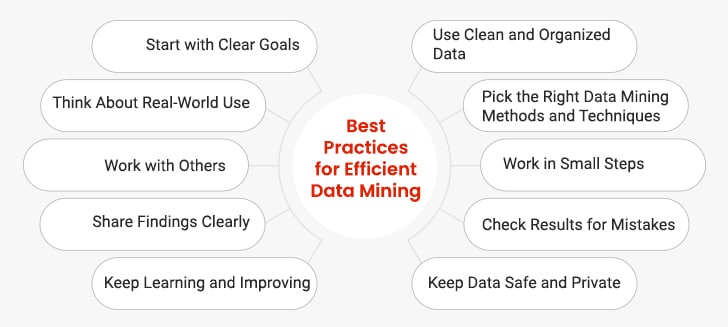
1. Start with Clear Goals
Know what you want to find before digging into the data. Clear questions help focus your search and save time. Without direction, you might waste effort on useless information. Define your purpose first to make the process meaningful.
2. Use Clean and Organized Data
Messy data gives wrong results. Remove duplicates, fix errors, and fill in missing values first. Clean data helps find accurate patterns. Good organization makes analysis smoother and more reliable.
3. Pick the Right Data Mining Methods and Techniques
Choose the right data mining techniques that match your needs. Some techniques of data mining are simple, while others might require training for mastery. The right technique makes work faster and easier.
4. Work in Small Steps
Break big problems into smaller parts. Solve one problem at a time instead of getting overwhelmed. Small steps make complex tasks manageable. Check results at each stage to stay on track.
5. Check Results for Mistakes
Some methods of data mining can sometimes show false patterns. Always test findings to ensure they make sense. Compare results with real-world facts to confirm accuracy. Don’t trust results blindly; verify them.
6. Keep Data Safe and Private
Not all data should be shared. Protect personal or sensitive information. Follow the rules about who can see the data. Security prevents misuse and builds trust.
7. Keep Learning and Improving
Data mining techniques often evolve. Stay updated with new data mining methods. Learn from mistakes and adjust your approach. Better skills lead to better results over time.
8. Share Findings Clearly
Present results in simple ways so others can understand. Use charts or summaries instead of raw numbers. Clear sharing helps business leaders use their findings effectively.
9. Work with Others
Teamwork brings together different skills and ideas. Others may spot things you miss. Collaboration makes data mining stronger and more useful.
10. Think About Real-World Use
Ask how findings will help in real life. Data should solve problems, not just sit in reports. Focus on practical outcomes that make a difference.
Real-World Use Cases of Data Mining Across Industries
Every industry collects data, but mining it makes it useful. Here’s how different sectors turn raw data into actions that help their business grow and serve customers better in simple, effective ways.
A. Retail: Understanding Customer Buying Habits
Stores use data mining to see what products customers buy together. By checking past receipts, they notice patterns like people purchasing bread with butter. This helps stores place items smarter and create better deals. Knowing these habits lets shops stock the right items at the right time. This reduces waste and drives sales. Customers get what they need, and stores make more money, a win for both.
B. Banking: Spotting Fraudulent Transactions
Banks analyze millions of transactions to find unusual activities. If your card suddenly shows purchases in another country while you’re home, data mining flags it. The system learns your normal spending to catch anything odd. This protects customers from theft and saves banks money. It also helps identify fake accounts or money laundering schemes by spotting suspicious patterns. Customers feel safer knowing their money is watched over by smart systems that learn their habits.
C. Manufacturing: Quality Control Improvements
Factories use data mining to find defects in products faster. By analyzing images from cameras on assembly lines, they spot flaws humans might miss. The system learns from past errors to catch similar issues earlier. This reduces waste and ensures only good products get shipped. Workers spend less time checking items manually, making production smoother. Customers receive better quality goods because problems are found and fixed before items leave the factory.
D. Education: Improving Student Performance
Educational institutions use data mining to analyze test scores, attendance, and participation of students. If many struggle with the same math topic, educators know how to explain it differently. The system can spot students who might need extra help before they fall behind. It also shows what teaching methods work best for what subject. Educational institutions may use this information to plan better lessons and support. This leads to better learning outcomes for everyone.
Summing Up
Data mining techniques help you make sense of data without needing to be an expert. From simple classification to deep learning, each method has its own advantage. The key is to start small, use clean data, and pick the right methods of data mining for your needs. When done right, it helps solve real problems, make better choices, and discover useful insights. So, don’t be afraid to explore and experiment. With practice, anyone can use these practical data mining techniques to uncover valuable information. Happy mining!





